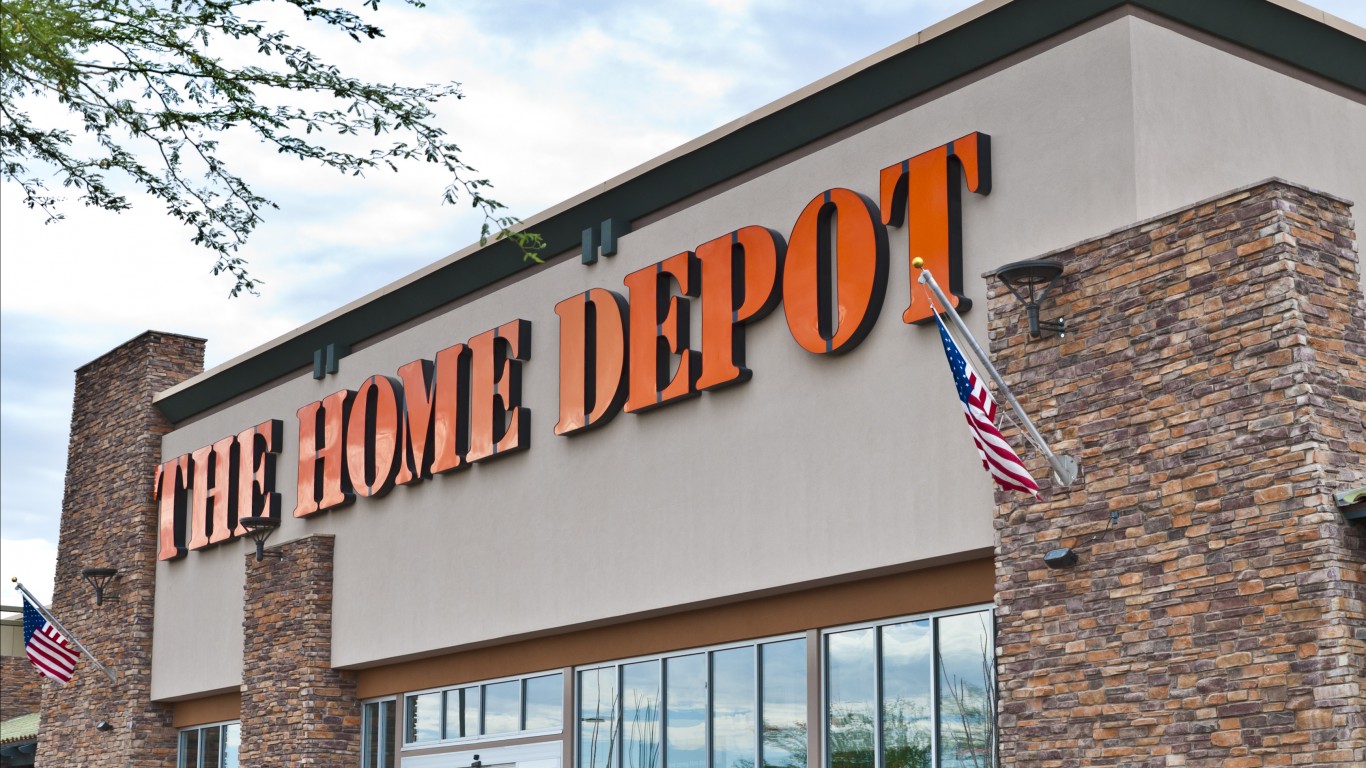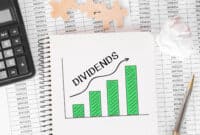
A key component of income investing is a portfolio that includes safe dividends, those that are unlikely to shrink or disappear. Recognizing when a dividend is stable and safe can be a challenge. Yet, certain metrics can offer clear signs for the investor looking to establish or shore up such a portfolio. What do these metrics tell us about the dividend at Home Depot (NYSE: HD)?
Home Depot’s most recent dividend payout was $8.36 a share, and the yield is now about 2.6% . The next ex-dividend date is expected to be on around February 21.. The current yield is a little under its peers, which is a 3% industry median yield, but higher than its closes peer, Lowe’s (NYSE: LOW) which sports a 2.1% dividend yield.
Dividend Aristocrat?

One clear sign of whether a dividend is stable and safe is whether the company is a Dividend Aristocrat. Those are companies in the S&P 500 that have not only paid a dividend consistently for 25 years but have increased their payouts every year as well. Home Depot is as close to a Dividend Aristocrat as you can get, however the company held its dividend steady during the Great Recession (2008 to 2010), but it has kept its dividend steady or growing since 1996.
Other Valuation Metrics

I would bucket Home Depot as a Dividend King as far as quality dividend payments go, but other financial metrics provide additional insight.
The dividend payout ratio indicates how much of a company’s earnings are paid out as a dividend. It is a sign of how safe a company’s dividend is and how much room it has for future growth. The higher the ratio, the greater the risk. Income investors often look for a dividend payout ratio of less than 60%. Home Depot most recent payout ratio sits at a healthy 50% and has a long history of sub-50% payout ratios.
A look at free cash flow reveals whether the company has the funds required for its payout, as well as for share repurchases or even paying down debt or making acquisitions. Home Depot’s free cash flow has been several billion dollars for more than decade and currently is spitting out $15.7 billion in free cash. Income investors prefer growing free cash flows and, looked at over the long term, that is the case at Home Depot.
Return on capital is a measure of how well a company allocates its capital to profitable projects to grow the business. Again, the thing to look for is stability, specifically a double-digit return over many years. Home Depot has a current return on capital of 27% and has been above 20% ROC for the past decade.
Operating margin is a measure of the percentage of revenue a company keeps as operating profit. Here too the preference is for a stable double-digit percentage increase. And here Home Depot has a 14.5% operating margin which is well above its peer group median operating margin of 5%.
A look at sales growth offers a clue to the volatility or cyclical nature of the business. Steady, moderate growth, say 3% to 7%, is ideal. Home Depot’s sales chart looks great with pretty steady revenue increases year after year. After the highlight of the housing bubble, sales dropped slightly during the great recession, but since 2010, yearly sales have more than doubled to a $153 billion the last twelve months.
A company’s net debt-to-capital ratio also can signal whether a dividend may be at risk. Because too much debt can put dividends at risk in hard times, a lower ratio is considered better. A debt-to-capital ratio above 0.6 usually means that a business has significantly more debt than equity. Home Depot’s debt to capital ratio is .97, which is a little more levered, but not a concern with the cash flow the company in generating.
Probably the most popular valuation metric is the price-to-earnings (PE) ratio. This indicates whether a stock is expensive or cheap at its current market price, compared to the broader market or to competitors. Home Depot’s forward PE ratio is 23, which means the stock is trading 23 times its expected earnings for the year. This is about average for its peer group and and about the same PE ratio for the S&P 500.
And finally, the number of shares outstanding is worth a look. When companies buy back their shares, that number shrinks. But secondary offerings of stock increase that number. Investors tend to prefer a declining total, as that increases their stake over time. At Home Depot, share outstanding have reduced significantly over the last 15 years, dropping from 1.7 billion shares in 2009 to 995 million now. The total is expected to drop with Home Depot’s board of directors authorizing a $15 billion share repurchase plan that kicked off in August 2023.
Summary

| Dividend Aristocrat | ❌ |
| Dividend Payout Ratio | ✅ |
| Free Cash Flow | ✅ |
| Return on Invested Capital | ✅ |
| Operating Margin | ✅ |
| Sales Growth | ✅ |
| Net Debt-to-Capital Ratio | ❌ |
| PE Ratio | ✅ |
| Shares Outstanding | ✅ |
Home Depot’s 2.4% dividend yield is in great shape and should continue to increase each year over the long term due to company’s financial health and the large amount of free cash the company is generating.
Cash Back Credit Cards Have Never Been This Good
Credit card companies are at war, handing out free rewards and benefits to win the best customers. A good cash back card can be worth thousands of dollars a year in free money, not to mention other perks like travel, insurance, and access to fancy lounges. See our top picks for the best credit cards today. You won’t want to miss some of these offers.
Flywheel Publishing has partnered with CardRatings for our coverage of credit card products. Flywheel Publishing and CardRatings may receive a commission from card issuers.
Thank you for reading! Have some feedback for us?
Contact the 24/7 Wall St. editorial team.



